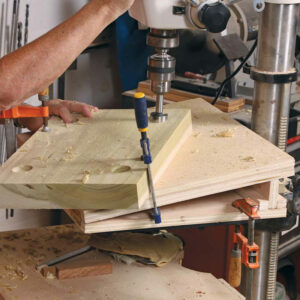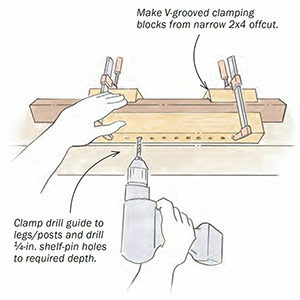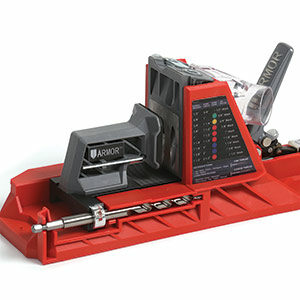All About Drill-Driver Accessories

Drills and drivers are versatile tools, thanks to the variety of bits and accessories available to woodworkers from chucks to jigs to specialty bits. Although some followers of traditional woodworking still use hand-drive augers and spoon bits, most drill bits these days are meant to be powered by an electric drill or a drill press. There are several types, each with its own strengths and weaknesses.
What counts
• Performance in end grain and cross grain
• Flat or rounded bottom hole
• Tear-out at hole perimeter
• Ability to cut without wandering
• Ability to make angled cuts
Twist and brad-point bits are versatile
Twist drills are probably the most common variety and make good general-purpose bits. They can bore holes in a variety of materials, including both wood and metal, and because of their geometry they are especially good at drilling holes into end-grain. The tips of twist drills are typically ground to form an angle of between 90° and 118°. They are not as good for drilling at steep angles, and they have a tendency to skate at the start of a hole. They are available with carbide tips and various coatings aimed at improving longevity.
Brad-point bitsare similar to twist drills except for a modified tip that ends with a small, sharp point or a point plus two spurs. They don’t produce as much tearout at the edge of a hole, and they don’t skate at the start of a hole. But they are not as effective on end grain or at steep angles.
Specialty bits for special tasks
Forstner and multi-spur bits have sharp outer rims that guide the cutting. They leave a flat-bottomed hole and are good for cutting through thin material. They also are good at cutting overlapping holes and for boring holes at steep angles. Multi-spur bits have teeth or serrations cut into the rim, making them cut more aggressively. One weakness with Forstner bits is that chip ejection is poor in deep holes; another is that they’re difficult to sharpen.
Powerbore bits are well suited for freehand drilling. The long tip sinks into the surface before the spur begins to cut, helping to keep the bit on track, and the hole is easy to get started. But they are not as precise as other bits and they don’t clear chips as effectively as some other types.
Spade bits are flat with two cutting edges milled into the end. They have a moderately long point that engages the work first, and are available with or without spurs. They are very easy to sharpen with a file and can make large holes (sizes up to 1-1/2 in. are common), but they also tend to produce a pretty rough cut.
Chucks and other drilling accessories
Chucks and commerical jigs increase the versatility of the drill-driver or drill press, allowing woodworkers to complete a number of tasks from installing hardware to boring holes under special circumstances. The variety of products include European door hardware jigs, self-ratcheting chucks and drill guides.
Fine Woodworking Recommended Products

Blackwing Pencils

Olfa Knife

Veritas Standard Wheel Marking Gauge





















Log in or create an account to post a comment.
Sign up Log in